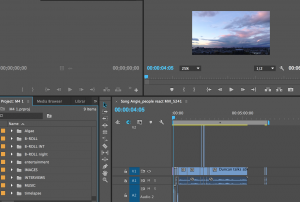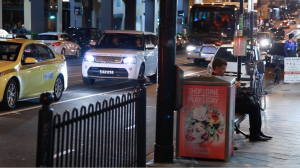In a 1991 lecture, actor and comedian John Cleese states that, “I always find that if two (or more) of us throw ideas backwards and forwards I get to more interesting and original places than I could have ever have gotten to on my own”. Although this is a powerful statement, I kind of feel like Cleese is preaching to the converted somehow. It resonated with me far less than other moments in the speech. Though not because I didn’t whole heartedly agree with it, but because I feel as though collaboration is innate. Further, the passage where Cleese describes ‘what an elephant isn’t’ (03:36) took my thinking into far deeper and more interesting places than collaboration.
For instance, collaboration has been the cornerstone of my creative existence! For as long as I can remember, the notion of bouncing ideas off a willing friend or associate has led to some of the biggest accomplishments of my life. Through attending university, team work is as much a prerequisite as it is a necessity, be it academically or socially.
Just this morning, I ran into a buddy and class mate Brydan who roused me from my morning, sleep-with-my-eyes-open-keypad-mash at the RMIT Student Hub. The interaction was social until it soon turned into an invaluable meeting that would significantly enhance my assignment and the way I think about writing character
At the time, a tiny fraction of my brain that was awake was attempting to ascertain why Final Draft was exporting unreadable .sex files as opposed to PDF’s. Brydan offered some advice on the issue and at last! A PDF was produced revealing the first pages of my script. He then asked if he could read it and without hesitation, I handed him my computer so that he could view the page on the screen.
After thoroughly reading my short script, ‘Buddy’ Brydan discovered an important aspect to one of my characters that I hadn’t (and probably wouldn’t have) noticed. Through profiling the character Treehorn’s socio-economic status, we worked out that he was from a wealthier family than first thought. Brydan deduced this by noting that in the script, Treehorn had had a gardener working on his parents property in the past which therefore implies affluence as groundskeepers are costly. Brydan quizzed me on this and as I responded to Brydan’s query, Treehorn changed. Not into a different character, but rather into an enriched version of what I had already created.
And there you have it, through collaboration new layers have formed opening potential pathways for further narrative. But this is just one example of a collaboration! I feel as though collaborations such as this one happen all the time. What I think Cleese is doing well in his lecture, is instilling common sense. I feel as humans, we have an innate urge to collaborate which is possibly why we’re so glued to social media but I digress.
What I found most interesting about Cleese’s lecture was the deduction of what creativity isn’t rather than what it is. “It’s easier to say what creativity isn’t. A bit like the Sculptor, who when asked, how he had sculpted a very fine elephant, explained that he’d taken a big block of marble, and then knocked away all the bits that didn’t look like an elephant” (03:36). This statement reminded me of the world that conceptual sculptor Rachel Whiteread forms in her exhibitions. Whiteread creates giant plaster casts of empty space. This concept of envisaging negative space, I believe, could allow people to get out of their heads, fret less about the unknown and stay true to the present and in turn themselves.
Though, as I am still exploring the affordances of such existential thought, nay… as I am still baffled with such existential thought, I decided to spare myself the brain-melt and delegate the excursion to my characters. They can be the ones to explore this, somewhat Cartesian, thought labyrinth like Guinea Pigs that are alive but only on the page. If my character Treehorn applies the thought of negative space, to defuse his disturbing, turbulent, mercurial thoughts to calm the storm that rages within him, perhaps we will be graced with a blissful leitmotif that balances out the story’s overall carnage. Otherwise, there’s just no relief.
Overall, Cleese’s statement has contributed to the expansion of my creative thinking and could potentially influence significant components of the world that I hope to create.

– Cleese, J 1991, A lecture on creativity, https://vimeo.com/18913413//.
– Parry, F 1971, The Shrinking of Treehorn, Holiday House Publishing.
– Whiteread, R (last accessed 23/3/2017) – http://www.tate.org.uk/art/artists/rachel-whiteread-2319



